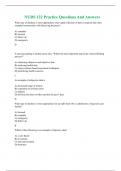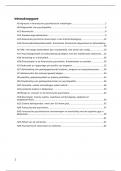Summary
Summary Lectures and literature Introduction to Business and Economics
- Course
- Institution
In this document are all the lectures of Introduction to Business and Economics. Besides, there is a summary of the literature from this course (Microeconomics, The Economy, Economic Approaches to Organizations). These books are partly summarised (just as the course manual). So all the literature i...
[Show more]











